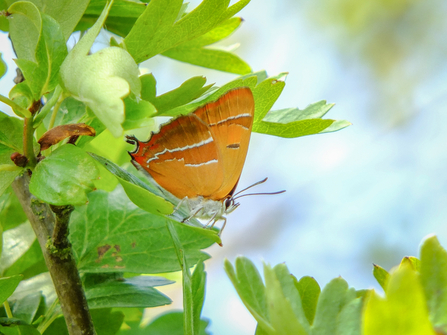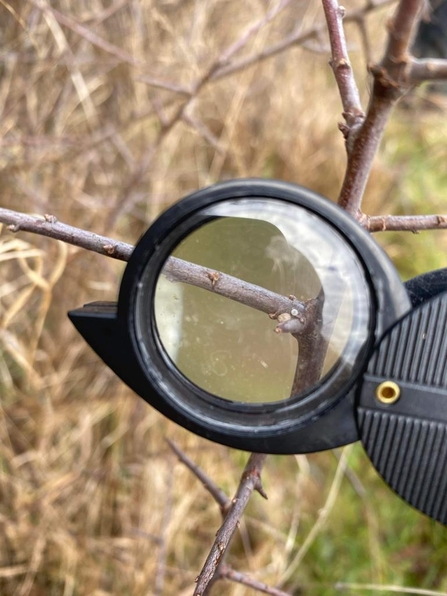If you’ve ever wondered how people carry out butterfly surveys, you might have imagined ecologists strolling through leafy nature reserves on a sunny day counting butterflies nectaring on wildflowers.
While this is a perfect method for monitoring many butterflies, there are species which spend so much of their time high up in the trees that we just can’t count them.
One of these species is the beautiful brown hairstreak (Thecla betulae) - a small but charming butterfly with bright orange underwings.








